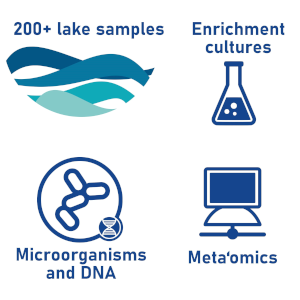Facts:
- Funding: Call H2020-MSCA-IF-2019
- Funding period: 2021-2023

Evolutionary radiation is a process where new species are formed at an elevated level. One example is the emergence of a large number of new mammal species after the extinction of the dinosaurs. The ARAMIS project will examine the evolution of aquatic microbes to increase our understanding of the causes, mechanisms and consequences of adaptive radiation.
In ARAMIS, which stands for Adaptive Radiation of Aquatic MIcrobial Species, genetic analyses (metagenomics and metatranscriptomics) of microbial consortia and communities from a set of more than 200 lake samples will be made. The purpose is to study the dynamics of individual genomes in space, time, and over different environmental conditions. The outcome will be combined with information on the recombination rates between genomes in order to capture a snapshot of the evolutive processes operating in the samples and their dependence on environmental constraints.
The results will help solve several of the unresolved questions in the field of microbial ecology, such as how shifts in environmental conditions impact the trajectory of microbial evolution, the relative importance of horizontal versus vertical gene transfer in microbial ecosystems, as well as the definition of microbial ‘species’.
As diversity is linked with stability, elucidating the factors driving diversification in freshwater taxa will also be useful for predictions of how lake ecosystems may respond to future change.